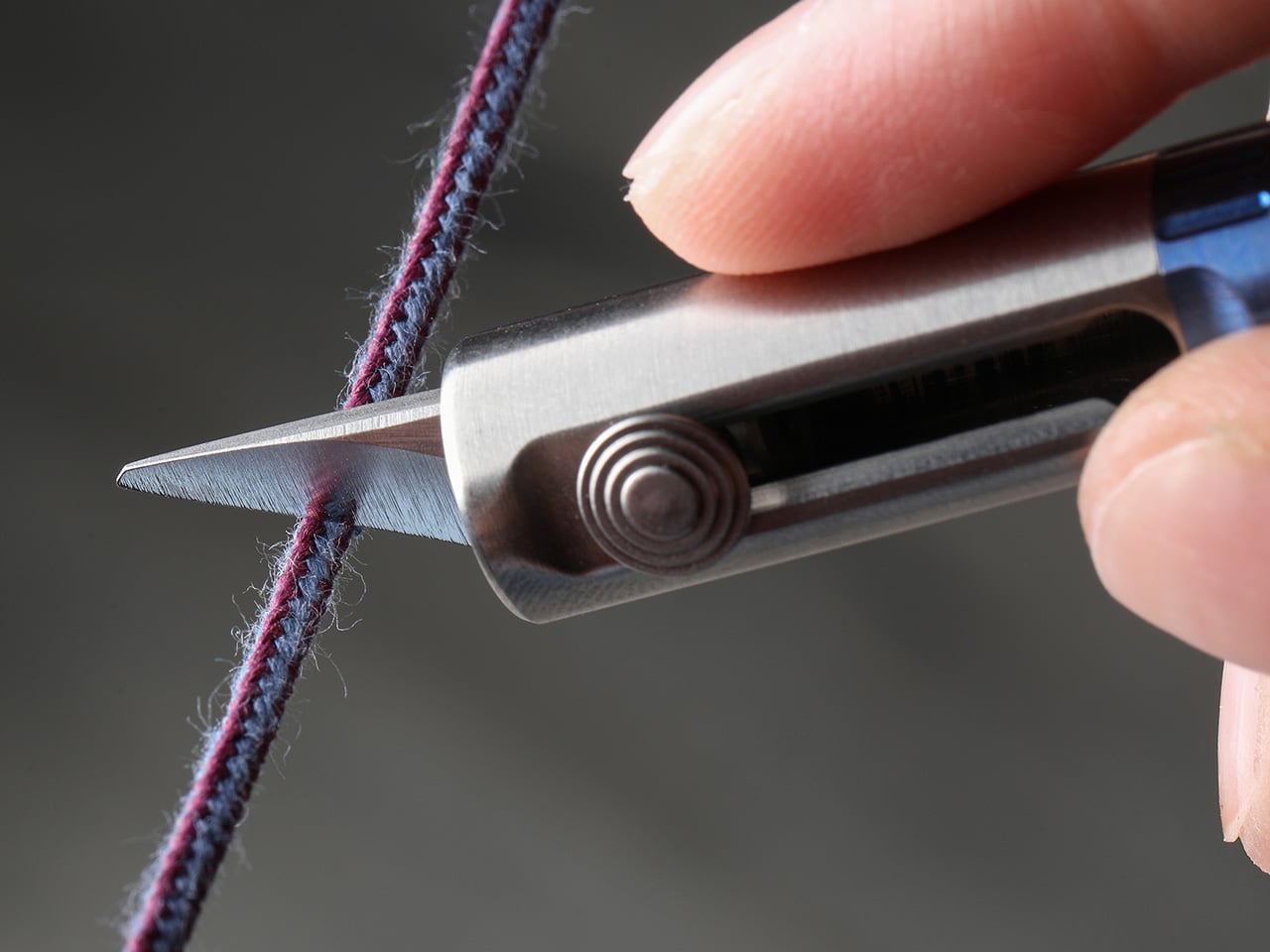The Best Way to Do Dips for Strength and Size
You’ve been sleeping on dips. Here’s why they deserve a spot in your weekly routine.
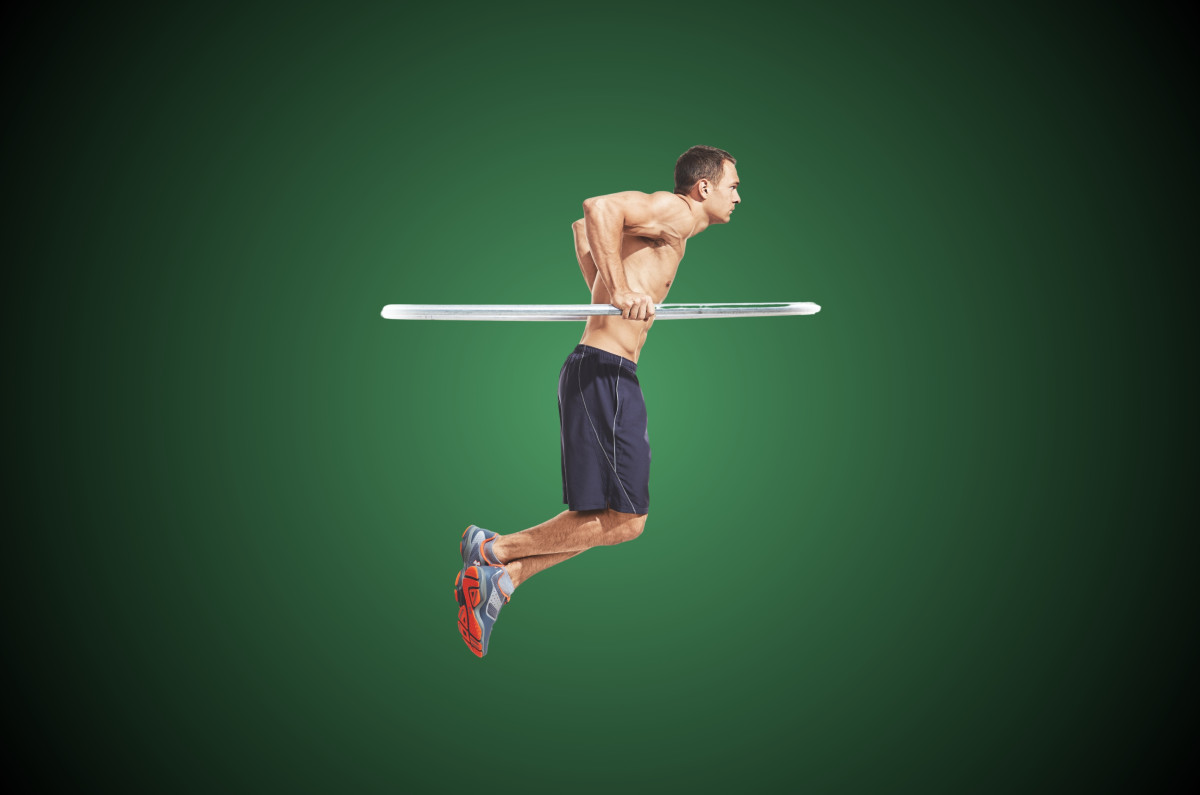
While lifting heavy is the go-to for building upper-body strength and size, bodyweight training can be just as effective, especially when you're using gravity as resistance. Although there are tons of bodyweight exercises promising muscle growth, pushups tend to get all the bodyweight glory. But if you're working with minimal equipment, dips might be the unsung hero. This powerhouse move hits your chest, shoulders, and triceps hard, making it one of the best bodyweight exercises for serious muscle gains.
“They’re a crucial part of my programming for push work. It’s going to hit the triceps, it’s going to hit the pec minor, it’s going to hit the pec major,” says Ryan Koziol, personal trainer and owner of RYKO Fitness. And unlike other chest-focused movements, which tend to tax the chest in the same pressing motion, dips are a unique movement pattern. “We’re not pressing horizontally. We’re dipping down. So it’s changing the dynamic and the angle of the way the chest is being hit.”
Studies have shown that dips do serious work for the chest and triceps: In electromyography (EMG) studies, where electrodes are placed on muscles to see how much they activate, dips rank among the strongest activators of the triceps, and outdo all varieties of pushups when it comes to taxing the chest.
But they can also cause discomfort and pain, especially in the shoulders. That’s because in addition to their work on the pecs and tris, dips challenge your deltoids—the caps of your shoulders—and stabilizer muscles that hold your shoulders in place. And as sets get longer, these muscles start to get taxed at much higher rates than the larger muscles, according to other EMG studies.
But with the right form and slow, steady progression, dips can be a powerful part of your bodybuilding arsenal. Read on for advice from Koziol and Shawn Arent, Ph.D., C.S.C.S., chair of the Department of Exercise Science at the University of South Carolina, on how to perform and progress dips safely for maximum strength gains.
Want the latest fitness advice and workouts to tackle any adventure? Sign up for our Blueprint newsletter. Beth Bischoff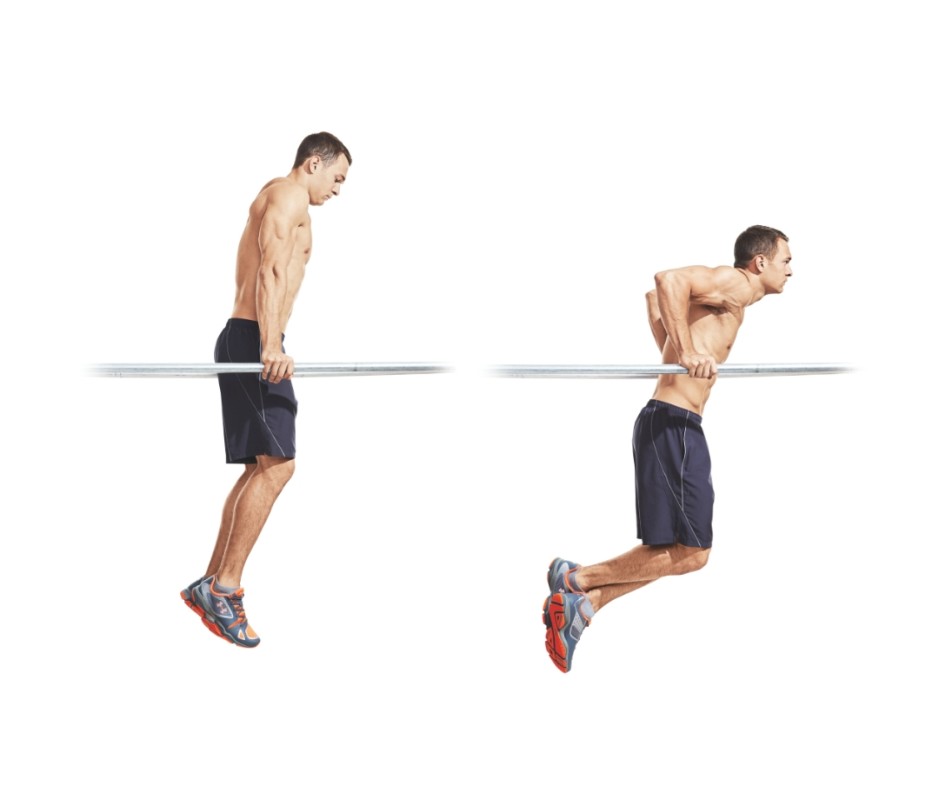
How to Do Dips
- Grab the bars with your palms facing inward, and your arms straight and in line with the sides of your body. Your shoulders should be tucked back and down so that they’re not hunched up in a shrug. If you can keep your legs straight, do so. Otherwise, bend your knees 90 degrees and cross your feet under you. Brace your core.
- Maintaining a straight line from head to heels (or head to knees, if they’re bent), hinge forward at your shoulders to tilt your body forward 25-30 degrees.
- Bend your elbows to lower your body until your elbows are bent 90 degrees. Maintain the straight body line as you descend.
- Press back to the top of the movement, and repeat.
Pro Tip
Perform three sets of as many reps as you can with good form, Koziol says. Once you can perform 10-12 reps in each of the three sets, add a small weight to increase the intensity. Another way to do these as a finisher, he says, is to set a timer for two minutes. Perform as many dips as you can, resting as needed, before the timer runs out. Perform this once or twice per week, trying to get at least one more dip every week or two.
What Muscles Do Dips Work?
When performed on parallel bars or rings, dips are among the most effective exercises for working the chest and triceps. In an EMG study of women that looked at different triceps exercises, the only exercise that taxed the backs of the upper arms more than dips was diamond pushups. In an EMG study that compared different chest exercises, dips outperformed regular pushups, stability ball pushups, and feet-elevated pushups for taxing the chest, but were bested by a bevy of weighted moves—barbell bench press came out as king there.
Dips also work the anterior deltoids, the muscles in the front of your shoulders. To a lesser extent, they tax a bunch of muscles that stabilize your shoulders: the upper and lower traps, the infraspinatus, and the serratus anterior. When performed on rings, they also activate the biceps, according to one EMG study.
Bench or chair dips, with your arms behind you, still work the triceps, though to a less intense extent than dips performed on bars or rings. But the chest is not really worked in this position.
Do Dips Work the Chest?
When performed on rings or parallel bars, the answer is a resounding yes. In fact, in one EMG study published in 2010 by Bret Contreras, Ph.D., bodyweight dips taxed the lower part of the chest at a higher average rate than a 225-pound barbell bench press.
To get the most chest activation from your dips, Arent says, you want to lean your body forward slightly while doing the movement.
“You lean into the dip a little bit, getting a 25-30 degree lean forward [from the shoulder joint, keeping the torso straight],” he says. “That’s going to emphasize the pecs more than if you’re straight up and down.”
Form Tips and Common Mistakes for Dips
To get the most chest- and tri-building work from dips, the 25- to 30-degree lean forward is key, Arent says. But when doing so, you want to hinge your whole body, not just your back.
“One of the most common mistakes I see is people rounding the upper back through the motion,” he says, creating an artificial lean. “The key, if you really want to focus on your chest, is to keep your body straight, so not rounding your back, but lean it all forward.”
Tilting your whole body, from head to feet (or head to knees, if they’re bent), from your shoulders creates proper form, he says. Keeping this straight body will also help you avoid some of the most common injury-risking mistakes associated with dips. The next time you’re doing dips, keep your eye out for these other mistakes:
Hands Behind Your Body
Even though you’re leaning forward, Arent says, your hands should stay in line with your body as you descend. If they trail behind your body, you’re taking pressure off your chest and putting more on the fronts of your shoulders, which can be painful.
Forearms Hinging Forward at the Wrist
To hinge your body forward, move at the shoulders, not the wrists. Your forearms should be straight up and down.
Head Dropping Down
Lots of guys hang their heads forward while dipping. Just as you would with a pushup or pressing motion, keep your head in line with your torso as you dip.
Shrugging Your Shoulders
If dips hurt your traps, you may be hunching your shoulders up throughout the movement, Arent says. Before you start the move, set your shoulders back and down.
Flaring Your Elbows
Maintaining a straight body position should keep you from flaring your elbows too much, Arent says, but concentrate on keeping your elbows close to your sides. When trying to target your chest, Koziol suggests, turn the handles of the dip station outward so they’re a little wider, if that’s an option. This will let you go a bit wider in the move, targeting the pecs, without flaring too much.
Torso Too Far in Front of Bench or Chair
If you’re performing bench or chair dips, with your hands behind you, concentrate on keeping your body as close to the chair or bench as you can, Arent says. In a study of how we move during different types of dips, scientists found that when you’re further from the bench, your shoulders require more range of motion to stabilize the body, which could result in injury.
Related: The Science-Backed Benefits of Running on Empty
Dip Variations
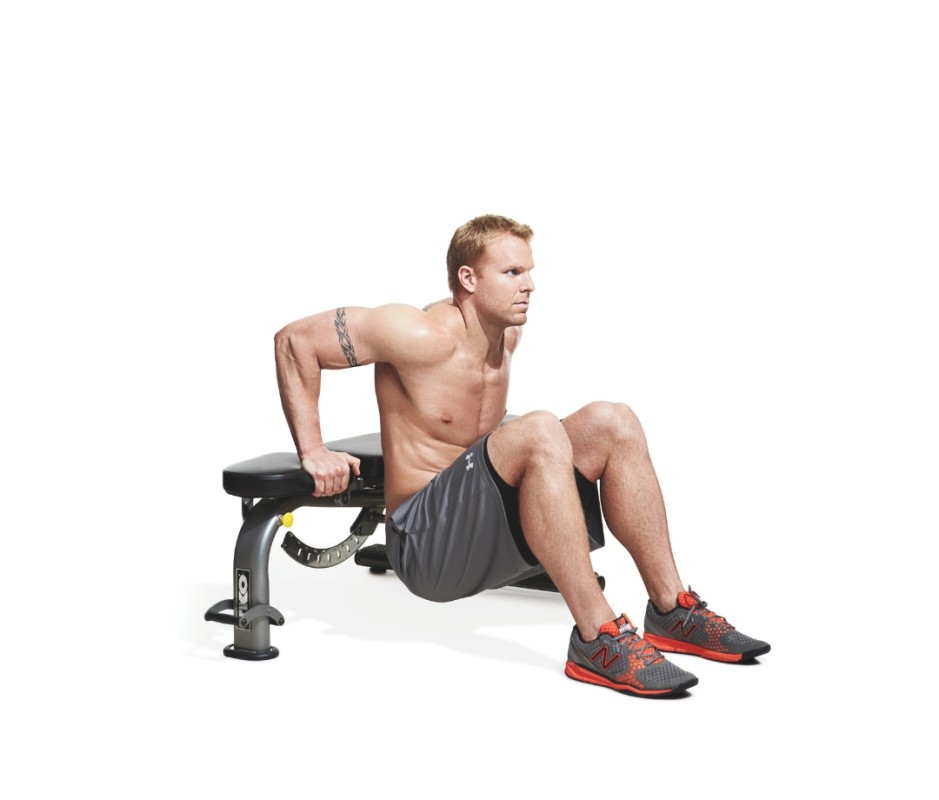
Beth Bischoff
Bench Dips
- Sit in front of a weight bench or chair.
- Put your arms behind you, shoulder-width apart, fingers facing forward.
- Place your feet flat on the floor, and bend your knees 90 degrees. (To make it harder, straighten your legs, with your heels on the floor.)
- Press through your palms up to the starting position, with your torso vertical and close to the bench or chair, and your elbows extended.
- Control your body as you bend your elbows until your arms form 90-degree angles. Keep your forearms vertical as you do so.
- Press back to the starting position. Repeat.
Pro Tip
In addition to keeping your torso close to the chair or bench behind you, put special focus on keeping your forearms vertical during this dip variation, Arent says. Getty Images/AzmanJaka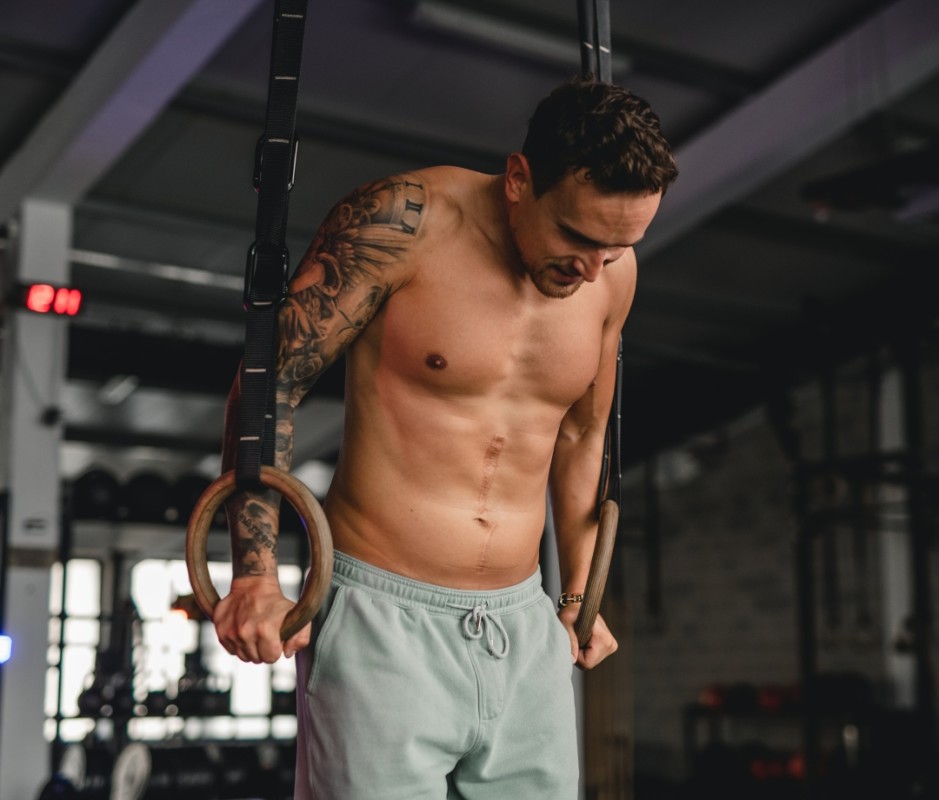
Ring Dips
Ring dips require more stabilization than traditional parallel bar dips. As a result, a study comparing different types of dips found that certain muscles, including the lats and the biceps, get worked more in this version of the move than others.
- Stand on a box or bench so the rings are around waist height. Put your hands in the rings, palms facing in.
- Step forward off the box, and assume the same starting position as a bar dip: Your arms should be straight and in line with the sides of your body. Your shoulders should be tucked back and down so that they’re not hunched up in a shrug. If you can keep your legs straight, do so. Otherwise, bend your knees 90 degrees and cross your feet under you. Brace your core.
- Maintaining a straight line from head to heels (or head to knees, if they’re bent), hinge forward at your shoulders to tilt your body forward 25-30 degrees.
- Bend your elbows to lower your body until your elbows are bent 90 degrees. Maintain the straight body line as you descend.
- Press back to the top of the movement, and repeat.
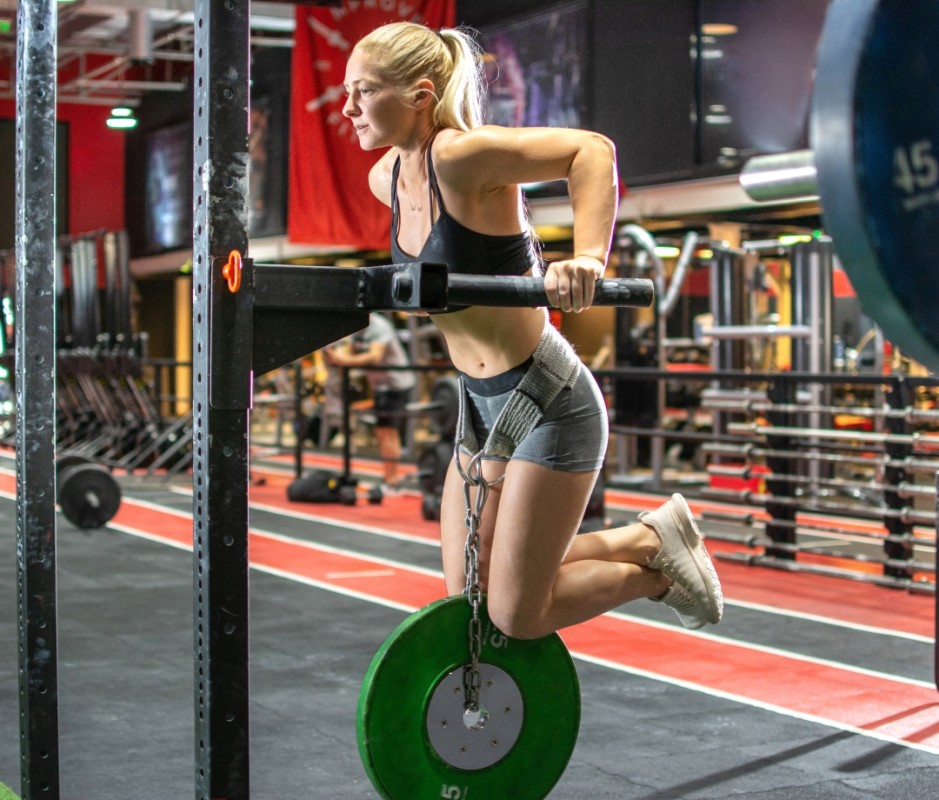
Getty Images/Bojan89
Weighted Parallel Bar Dips
- Affix a weight belt around your waist, with the weight hanging between your legs by the chain, to start.
- Then grab the bars with your palms facing inward, and your arms straight and in line with the sides of your body. Your shoulders should be tucked back and down so that they’re not hunched up in a shrug. If you can keep your legs straight, do so. Otherwise, bend your knees 90 degrees and cross your feet under you. Brace your core.
- Maintaining a straight line from head to heels (or head to knees, if they’re bent), hinge forward at your shoulders to tilt your body forward 25-30 degrees.
- Bend your elbows to lower your body until your elbows are bent 90 degrees. Maintain the straight body line as you descend.
- Press back to the top of the movement, and repeat.
Pro Tip
Koziol suggests adding weight to your dips once you can do three sets of 10-12 reps. Most people add weight with a weighted belt. Start light, with 5-10 pounds.




























































